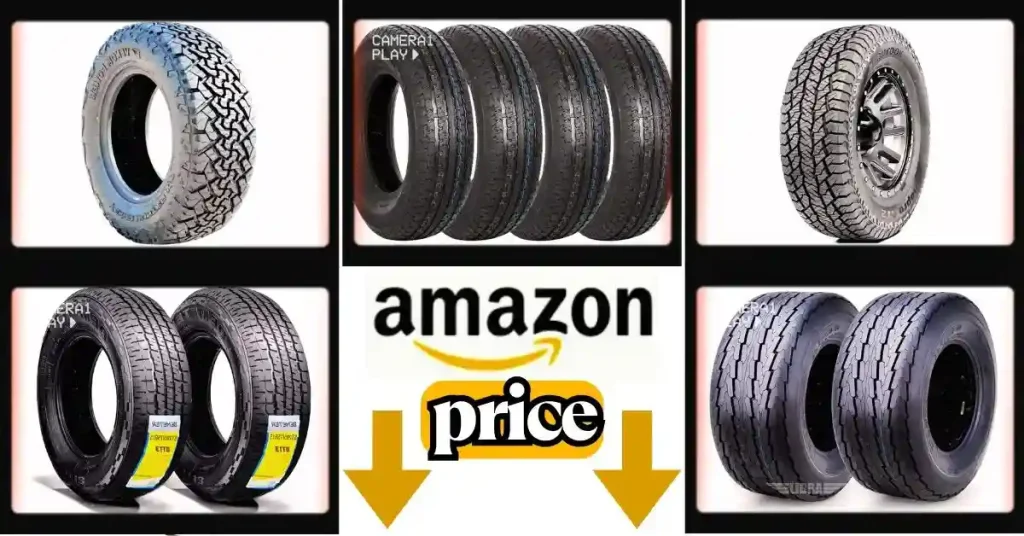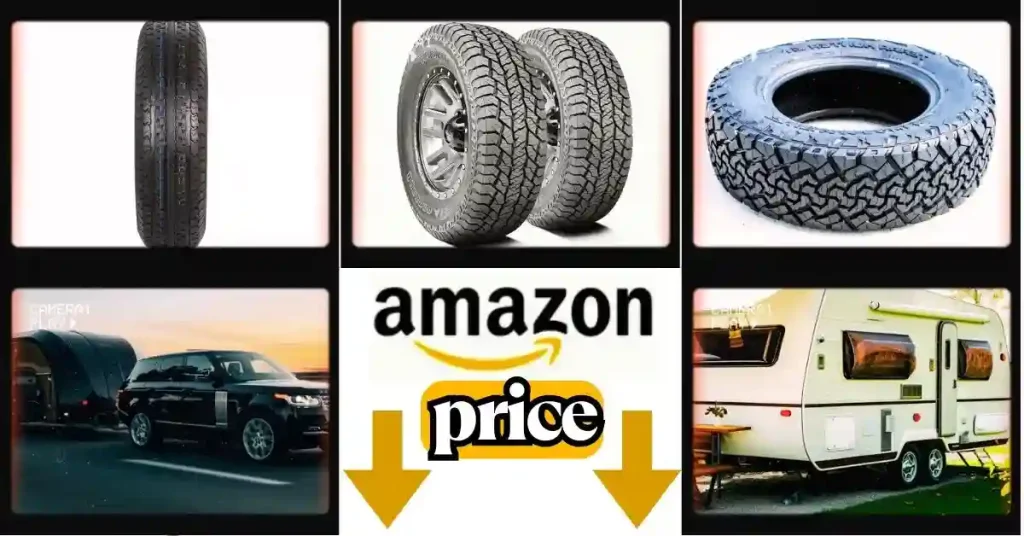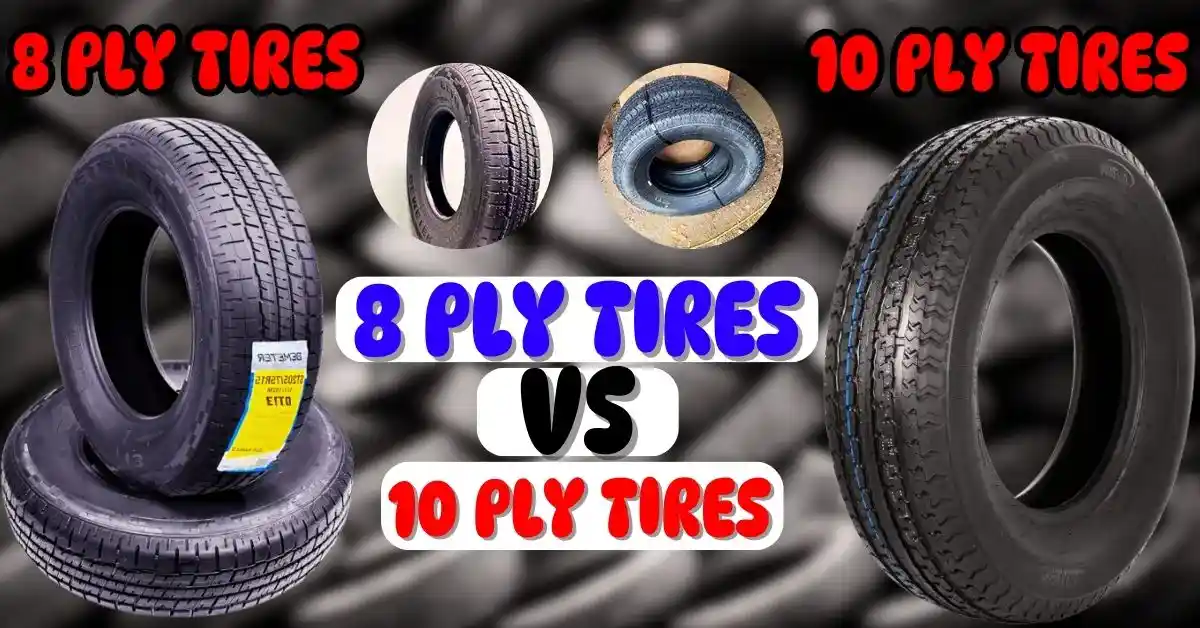I’ve driven on both 8 ply vs 10 ply tires, and trust me—they’re not one-size-fits-all. The first time I swapped out my 8 ply for 10 ply on my truck, I could feel the difference right away. From ride comfort to towing power, your tire’s ply rating matters more than most people think. If you’re stuck choosing between 8 ply vs 10 ply tires, I’ll help you figure out what’s best for how—and where—you drive. Let’s break it down together, with real-world insight and simple facts you can trust.
What Does Tire Ply Rating Actually Mean?
Tire ply rating tells you how strong a tire is and how much weight it can carry. Years ago, the number showed how many fabric layers were in the tire. Back then, more layers meant a tougher tire. But that’s not how it works today.
Now, the ply rating is more like a code. It links to a tire’s load range and how much air it can hold. For example, 8 ply tires usually match Load Range D, while 10 ply tires line up with Load Range E. Even though the tire doesn’t have 8 or 10 actual layers, the rating shows how strong it is.
So when someone asks, “What does 10 ply mean?” it’s really about how much load the tire can handle, not how thick it is.
I learned this the hard way when I bought new tires for my camper. I thought I needed 10 actual plies. But the guy at the tire shop explained that it’s all about pressure and strength now, not fabric count. A 10 ply rated tire holds more air and handles more weight than an 8 ply.
Here’s a simple chart that clears it up:
Tire Ply Rating Chart
| Ply Rating | Load Range | Max PSI | Best For |
| 4 Ply | B | 35 PSI | Small cars, basic daily use |
| 6 Ply | C | 50 PSI | SUVs, light trailers |
| 8 Ply | D | 65 PSI | Trucks, small campers |
| 10 Ply | E | 80 PSI | Towing, hauling, heavy-duty use |
This helped me pick smarter the next time. I stopped guessing based on numbers and looked at what the tire was made for. An 8 ply tire works great for light loads and daily drives. A 10 ply tire is better for heavy trucks or long hauls.
So if you’re picking tires, match them to your needs. It’s kind of like choosing a backpack. You don’t need a hiking pack just to carry your lunch. But if you’re going on a long trip with gear, a tougher one makes sense.

👉🏿👉🏻 Check Latest Price and Offer at Amazon 👈🏻👈🏿
👉🏿👉🏻 Check Latest Price and Offer at Amazon 👈🏻👈🏿
8 Ply Tires vs 10 Ply Tires: The Key Differences
I’ve used both 8 ply and 10 ply tires. The difference is real. Let me break it down in plain English.
Durability & Strength
10 ply tires are stronger. I used them on a rough gravel road. They held up great—no flats, no damage. My old 8 ply tires? Not so lucky. They wore out faster and felt weaker.
Do 10 ply tires last longer? Yes, if you drive on bad roads or carry heavy loads. But for city streets, 8 ply is usually fine.
Load Capacity & Usage
What are 8 ply tires rated for? They’re good for light trucks, trailers, and daily driving. I used 8 ply tires on my work trailer. They worked well—until I started hauling heavy gear.
Then I switched to 10 ply. Big difference. The trailer felt more stable, even at high speeds.
8 ply vs 10 ply trailer tires? Use 8 ply for light loads. Use 10 ply for big hauls or long trips.
Ride Comfort & Handling
This one’s easy. 8 ply tires ride smoother. They feel soft and comfy. 10 ply tires feel stiff and firm.
Is a higher ply tire better? Not always. Higher ply means more control, but it also means a rougher ride.
Fuel Efficiency & Wear
10 ply tires are heavier. That means lower gas mileage. I lost about 1–2 mpg when I switched.
Do 10 ply tires last longer? Sometimes. They do better under pressure—literally. But for normal driving, they can wear out faster if not cared for. Rotate them often to make them last.
When to Choose 8 Ply Tires
I’ve used 8 ply tires on my truck and trailer. They work great for everyday use. If you mostly drive on city streets or smooth highways, these tires are a smart pick.
8 ply tires are made for lighter loads. That includes small trucks, SUVs, and trailers. I used them when hauling tools and furniture. They held up well and gave me no trouble.
The ride is smooth and quiet. I noticed less road noise compared to 10 ply tires. My truck felt softer on bumps and turns. If comfort matters to you, you’ll like how these tires feel.
They also help save on gas. 8 ply tires are lighter, so your car uses less fuel. After switching, I got better mileage—about 2 extra miles per gallon.
They cost less too. Both upfront and in the long run. If you don’t carry heavy stuff, there’s no need to pay more.
So, if you drive to work, run errands, or go on weekend trips, 8 ply tires are a good match. They’re soft, quiet, and budget-friendly.
When to Choose 10 Ply Tires
I first switched to 10 ply tires when I started towing a camper through Colorado’s mountain passes. I needed strength and grip I could trust—and 10 ply delivered.
10 ply tires are made for heavy-duty jobs. That means trucks, trailers, RVs, and off-road rigs. If your vehicle carries big loads or drives over rough ground, 10 ply tires are the safer choice.
I’ve driven both 8 ply and 10 ply tires, and the difference is clear when the road gets tough. 10 ply tires handle rocks, gravel, and potholes better. They’re built to take more weight and resist damage.
If you tow often—whether it’s a boat, trailer, or camper—you’ll want 10 ply. They don’t flex as much under load, so the ride stays steady. My trailer felt more stable, especially in wind or on hills.
These tires also help on job sites. I’ve taken my truck to construction zones where debris could shred weaker tires. 10 ply tires are thicker and harder to puncture. That peace of mind is worth it.
Yes, the ride feels firmer. You might notice bumps more than with 8 ply. But if you value strength over softness, it’s a trade-off worth making.
Fuel economy can dip a little. Heavier tires mean more rolling resistance. But for the safety and support they give, 10 ply tires are worth the extra fuel.
So when should you choose 10 ply tires? Pick them if you haul, tow, or travel rough terrain often. They’re made to work hard and keep going when roads get rough.
Trailer Tires: 8 Ply vs 10 Ply
I’ve towed trailers with both 8 ply and 10 ply tires. And here’s what I learned. If you’re hauling light loads on short trips, 8 ply tires might be all you need. They ride smoother, cost less, and are better for gas mileage.
I used 8 ply trailer tires when I was just taking weekend trips close to home. Roads were smooth, and the load was light. The ride felt soft, and I had no issues. But once we started longer trips with more gear, I felt the tires struggling. On hills or rough roads, the trailer started to sway a bit. I didn’t like that.
So, I switched to 10 ply tires, and wow—what a difference. The trailer felt more stable, even with a full tank and bikes on the back. No more sway. No more worries. 10 ply tires are stronger, and they handle heat, weight, and rough roads better. They gave me peace of mind on long highway drives.
Here’s the bottom line:
Use 8 ply tires for light loads and short trips. Go with 10 ply tires if you haul heavy or drive long distances.
For me, the upgrade was worth it. I’d pick 10 ply trailer tires every time for towing. They just feel safer and more solid.

👉🏿👉🏻 Check Latest Price and Offer at Amazon 👈🏻👈🏿
Cost Breakdown: Upfront Price vs Long-Term Value
So, do I need 8 ply or 10 ply tires? Let’s talk about the money side of things—because that’s where most of us start the decision-making.
From my experience, 8 ply tires cost less upfront. When I replaced my first set, I went with 8 ply because they fit my budget. The ride was smooth, the install was quick, and I didn’t feel like I had overpaid. If you mostly drive on clean roads and don’t carry heavy loads, 8 ply tires can save you cash right away.
But here’s the thing: 10 ply tires often pay off over time. They last longer, especially if you haul, tow, or go off-road. I learned this the hard way. I burned through a set of 8 ply trailer tires on a long summer trip, but my 10 ply replacements have held up for over two years with zero issues. So while 10 ply tires do cost more at first, they often last longer and need fewer replacements.
And let’s not forget maintenance. I noticed I had fewer flats and less uneven wear with my 10 ply set. That meant fewer repair shop visits, less hassle, and more time doing what I enjoy—driving, not dealing with tire problems. Over time, that peace of mind is worth more than I expected.
If you’re asking yourself “Do I need 8 ply or 10 ply tires?”, think beyond just the price tag. It’s about how and where you drive. For light-duty use, 8 ply might be perfect. But if you’re working your truck hard or traveling far, 10 ply could save you more in the long run.
My Personal Take: What I’d Choose and Why
I’ve used both 8 ply and 10 ply tires. And here’s what I’ve found.
If you drive mostly on smooth roads or around town, go with 8 ply. They ride softer. They’re quieter. They save gas. I had 8 ply tires on my daily truck, and they felt great. They soaked up bumps and made city driving easy.
But when I started hauling a camper and hitting gravel roads, I switched. That’s when 10 ply tires made more sense. They’re stronger. They don’t flex as much. I got fewer flats, even with heavy loads.
So, here’s what I suggest:
- Use 8 ply if you don’t tow much and want a smoother ride.
- Choose 10 ply if you tow, haul, or drive off-road a lot.
Think of it like shoes. You don’t wear hiking boots to run errands. And you don’t wear sneakers on a job site. Your tires should match how you drive.
For me, the right tire changes with the job. Comfort for the city. Strength for the dirt. Pick what fits your day-to-day life, and you won’t go wrong.

👉🏿👉🏻 Check Latest Price and Offer at Amazon 👈🏻👈🏿
Frequently Asked Questions (FAQs)
Q1: What does ply rating in a tire mean?
Ply rating shows how strong a tire is. Long ago, it meant how many fabric layers were used. Now, it’s more about the tire’s strength and load power. A 10 ply tire isn’t made with 10 layers—it just acts like it is. More ply means the tire can carry more weight.
Q2: Do I need 8 ply or 10 ply tires?
It depends on how you drive. I use 10 ply tires when I tow or go off-road. They’re tough and hold up well. But for daily trips or highway rides, 8 ply tires feel smoother and save gas. If you haul heavy stuff, go 10 ply. If not, 8 ply might be perfect.
Q3: Are 10 ply tires stronger than 8 ply?
Yes, they are. 10 ply tires are made to carry more weight. They also resist cuts and damage better. I’ve driven both, and the 10 plys did better on rough gravel. They’re built for hard jobs and tough roads.
Q4: What are 8 ply tires rated for?
8 ply tires work well for light trucks, SUVs, and trailers. They’re great for smooth roads and light loads. I’ve used them for my daily drives and small trailer runs. They ride nice and don’t wear out too fast.
Q5: Will 10 ply tires last longer?
Sometimes. If you haul or drive off-road a lot, yes. But for city roads, they may wear faster. They’re heavier and stiffer. If your ride is light, 8 ply tires could last longer just from less strain.
Q6: Is a higher ply tire always better?
Not always. More ply means more strength, but also a harder ride. I tried 10 plys on my daily truck and didn’t like the stiff feel. I also spent more on gas. Choose based on how you drive, not just the number.
Q7: Can I use 10 ply tires on a half-ton truck?
Yes, you can. I’ve done it. They work well if you tow, carry tools, or drive rough roads. But if you just run errands or drive light, they might feel too stiff. Make sure your truck can handle the weight.
Final Thoughts: Making the Right Tire Choice
After years of switching between 8 ply and 10 ply tires, I’ve learned one thing: it all comes down to how you use your ride. No one-size-fits-all answer here. If you mostly drive on smooth roads and don’t tow much, 8 ply tires are likely the better pick. They ride softer, cost less, and save gas. That’s what I run on my daily driver, and they feel great.
But when I’m hauling gear, towing my camper, or heading into rough terrain, I don’t think twice—I go with 10 ply tires. They’re built tough, hold steady under load, and don’t flinch on gravel or dirt roads. So yes, 10 ply tires are stronger, but that strength comes with a stiffer ride and a bit more cost at the pump.
Here’s the truth: higher ply doesn’t always mean “better.” It means “better for certain jobs.” If your tires work too hard for what you need, they’ll just wear you out—like wearing steel boots to the beach. If they’re too soft, you’ll feel it when the load hits or the road gets rough.
So ask yourself: What kind of driving do you do most? Do you tow or haul? Is comfort more important than max strength? When you answer that, your tire choice gets clearer. I always say—match your tires to your lifestyle, not just the specs.
In the end, the right tire is the one that fits your needs, your roads, and your ride. Choose smart, and your tires will take care of you for miles to come.
To Get More About Car Accessories Product You Can Visit Our Site. If You Found our Posts Helpful Leave a Comment Below

